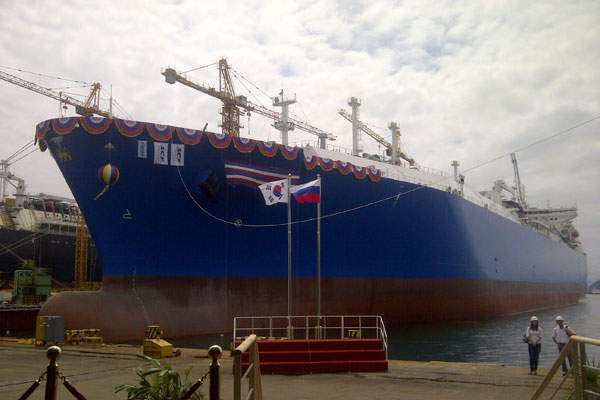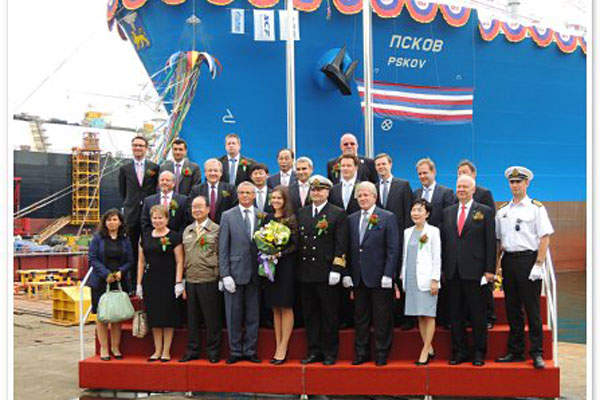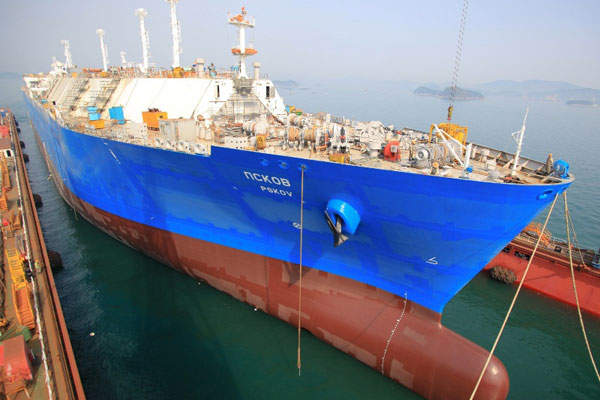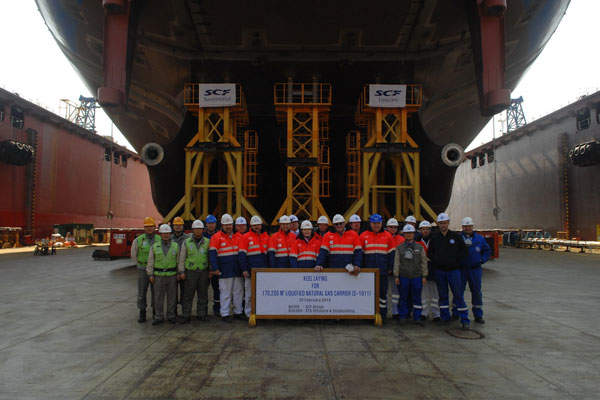
Pskov is a new liquefied natural gas carrier (LNGC) built by STX Offshore & Shipbuilding, for Russia’s largest shipping company OAO Sovcomflot (SCF).
Pskov is the second vessel of the Atlanticmax Ice2 class after its sister vessel Velikiy Novgorod, which was delivered in January. The other two vessels of the class SCF Melampus and SCF Mitre are scheduled to be delivered in December this year and April 2015 respectively.
The Atlanticmax Ice2 (1C) class gas carriers are designed to transport gas to and from existing global liquified natural gas (LNG) terminals all round the year, particularly from Russia’s first LNG terminal Sakhalin-2 and the upcoming Vladivostok-LNG terminal. Pskov is chartered to Russian gas company Gazprom Global LNG (GGLNG) under a long-term agreement for a minimum of 15 years.
Related content
Sovcomflot takes out $316m loan to build two LNG carriers
Russian shipping company Sovcomflot (SCF Group) is taking out a $316m ten-year credit from three banks to finance the construction of two new ice-class LNG carriers.
Pskov liquified natural gas carrier (LNGC) orders and deliveries
SCF signed a contract with Gazprom Global LNG (GGLNG), a subsidiary of Gazprom, for the two Gaz Ice type gas carriers in June 2011. SCF was approved a $316m loan agreement for a ten-year tenure in December 2013 by three international banks, ING Bank of Netherlands, KfW IPEX-Bank of Germany and Japan’s Sumitomo Mitsui Banking Corporation for the construction of the two LNG tankers Velikiy Novgorod and Pskov.
The first steel for LNGC Pskov was cut in June 2012 and the keel laying ceremony for the gas tanker took place in February 2013. The ship was christened at a ceremony in the city of Jinhae, South Korea and was delivered to its owner in August.
Atlanticmax Ice2 class Pskov ship design
The Pskov LNG carrier has an overall length of 299.9m and a moulded breadth of 45.8m. The depth to main deck and maximum draft are 26m and 11.5m respectively. The gas carrier, which has a cargo storage capacity of 170,200m³, has a gross tonnage of 116,000t, while the net registered tonnage (NRT) is 34,960t.
Pskov was built according to the Russian Maritime Register of Shipping (RS) and Lloyd’s Register classification and sails under the Liberian flag. The vessel received the RS class notation including KM * Ice2 AUT1 OMBO EPP ANTI-ICE LI CCO ECO-S WINTERIZATION(-30) gas carrier type 2G (methane).
The gas carriers in the "Gaz Ice" series feature reinforced membrane type cargo tanks, which significantly reduce boil-off rate and gas lost due to evaporation.
The Cargo Containment System of the vessel is of the Gas Transport & Technigaz (GTT) NO 96 E2 type. The NO 96 membrane system is a cryogenic lined inner hull comprising of two metallic membranes made of 500mm wide Invar strakes and two separate insulation layers.
The primary membrane holds the LNG cargo and a similar secondary membrane ensures 100% redundancy in case of leakages. The membranes are supported by primary and secondary insulation layers made of prefabricated plywood boxes filled with expanded perlite. The thickness of the primary layer is between 170mm and 250mm, while the thickness of the secondary layer is about 300mm.
The machinery and equipment on-board are designed to meet high environmental requirements (ECO-S notation) for operation in severe weather conditions as low as -30°С and the Arc4 ice class hull enables the vessel to sail along the Northern Sea Route during summer.
Propulsion system on-board OAO Sovcomflot’s vessel
The LNG tanker is powered by a ME-GI slow-speed, dual-fuel diesel-electric engine (DFDE) propulsion system consisting of two 8L51/60DF engines and two 9L51/60DF engines. The engines were manufactured at MAN Diesel & Turbo’s Augsburg plant in Germany and then shipped to South Korea for final outfitting.
The tri-fuel propulsion system also gives an option to use LNG as fuel making it highly efficient and considerably reduces nitrogen oxide and sulphur oxide emissions. The propulsion system allows the vessel to cruise at a service speed of 19.5k.











